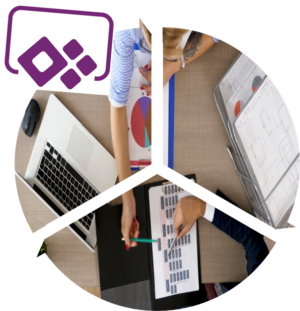Back
A
C
D
I
R
S
T

Understanding the Power Fx Back function
The Power Fx Back function is a built-in function in Power Apps that allows you to navigate back to the previous screen or page. It is similar to the back button on a web browser. The Back function can be used to navigate from a detail screen to a list screen, or from a form screen to a detail screen. It is an important part of the navigation structure of any Power Apps application.
Basic syntax of the Power Fx Back function
The basic syntax of the Power Fx Back function is as follows:
Back()
The Back function does not take any arguments. When this function is called, it navigates back to the previous screen or page. It is important to note that the Back function only works when there is a previous screen or page to navigate back to. If there is no previous screen or page, the Back function will not work.
Using the Power Fx Back function in your Power Apps application
The Power Fx Back function is used to navigate back to the previous screen or page in your Power Apps application. To use the Back function, you need to add a button or icon to your screen. When the user clicks on the button or icon, the Back function will be called, and the user will be navigated back to the previous screen.
Here are the steps to use the Power Fx Back function in your Power Apps application:
1. Open your Power Apps application.
2. Select the screen where you want to add the Back button or icon.
3. Insert a button or icon onto the screen.
4. Select the button or icon to open the properties pane.
5. In the OnSelect property of the button or icon, add the Back function.
Here is an example of the code to add the Back function to a button:
OnSelect = Back()
Once you have added the Back function to your button or icon, you can test your application. When the user clicks on the button or icon, they will be navigated back to the previous screen or page.
Advanced usage of the Power Fx Back function
The Power Fx Back function can be used in more advanced scenarios to navigate back to a specific screen or page. This is useful when you want to navigate back to a specific screen or page in a multi-step process. To do this, you need to use the Navigate function in combination with the Back function.
Here are the steps to use the Navigate function with the Back function:
1. Open your Power Apps application.
2. Select the screen where you want to add the Back button or icon.
3. Insert a button or icon onto the screen.
4. Select the button or icon to open the properties pane.
5. In the OnSelect property of the button or icon, add the Navigate function.
Here is an example of the code to add the Navigate function to a button:
OnSelect = Navigate(Screen2, ScreenTransition.None); Back()
In this code, the Navigate function is used to navigate to Screen2. The ScreenTransition.None parameter is used to disable the transition animation when navigating to Screen2. After navigating to Screen2, the Back function is called to navigate back to the previous screen.
The Power Fx Back function is an important part of the navigation structure of any Power Apps application. It allows for easy navigation between screens and pages, making it easier for users to use your application. By following the steps outlined in this article, you can add the Back function to your Power Apps application and use it effectively. The Back function can be used in more advanced scenarios to navigate back to a specific screen or page, making it even more useful in complex applications.




